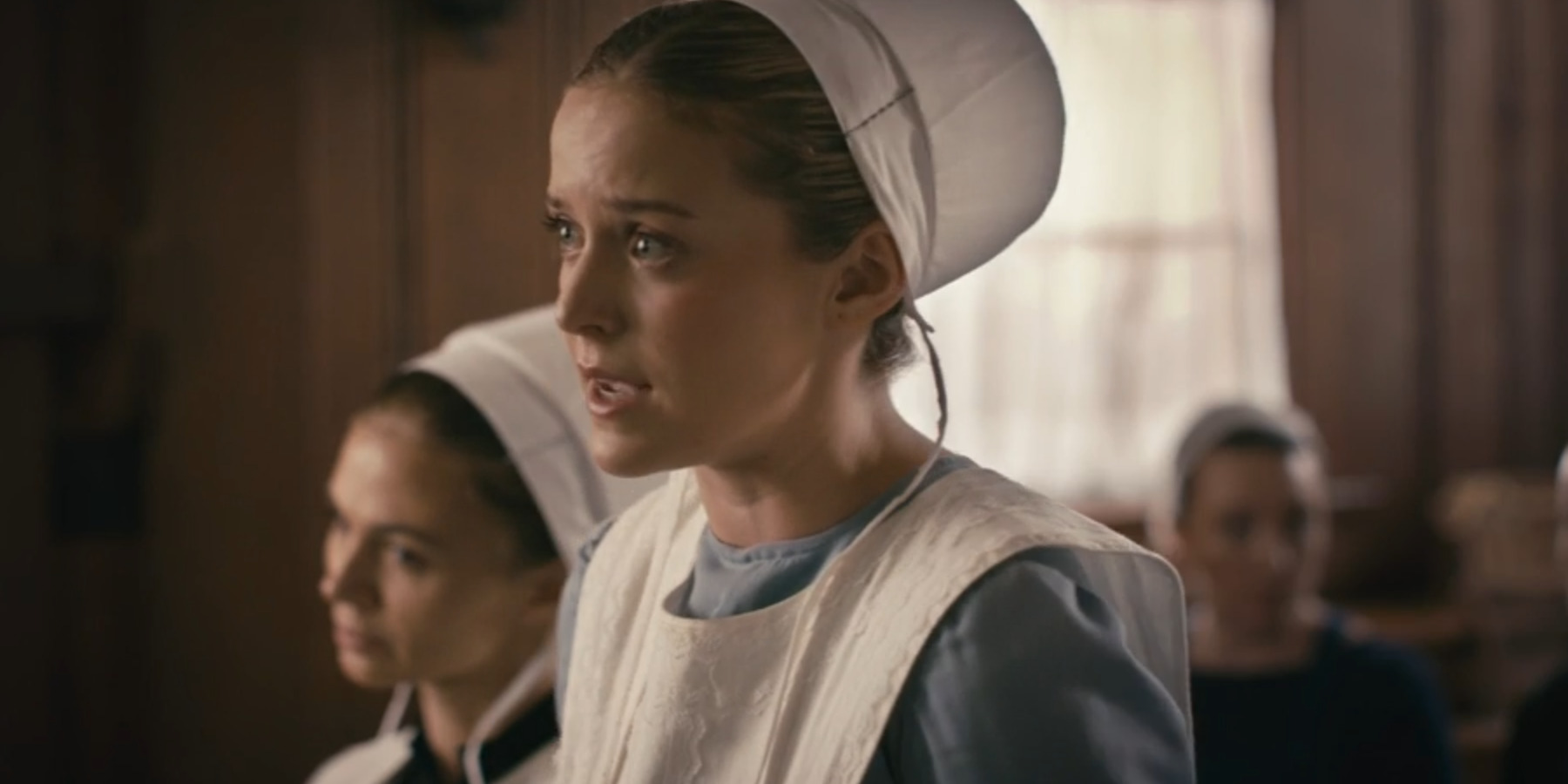In ‘My Amish Double Life,’ the audience is transported into the peculiar life of a young Amish woman whose momentary escape from her community leads to dark roads. Ever since her father’s death, Emma Miller has been struggling to find her footing with her people. Consequently, she jumps at the chance of exploring the world as the Non-Amish, or “The English,’ experience it. With the help of her best friend, Rebecca, she sneaks away from their village and meets up with a Prince Charming-esque man, Heath. Nonetheless, this fairytale quickly turns sour when an evening at Heath’s place leads to the discovery of a dead body that turns Emma’s life upside down seemingly overnight.
The film centers around Emma and her experiences as a young Amish woman who inexplicably finds herself in the middle of a murder case. Her connections with her community and the close-knit nature of the central crime enhance the character and her story’s ties to reality. However, are there any real-life counterparts behind this tale’s characters? SPOILERS AHEAD!
Emma Miller is a Fictional Character who Represents a Realistic Life Experience
‘My Amish Double Life’ is a fictional story written by screenwriters Bryan Dick, Ken Sanders, and John J. Tierney. As a result, the characters and storylines within the film lack any firm real-life counterparts that may have served as direct inspirations for the story. Consequently, the tale’s protagonist, Emma Miller, a young woman who finds herself in the middle of multiple inexplicable murders, is also a work of fiction. Even so, her experiences aren’t entirely devoid of real-life references. Emma’s role in the narrative remains that of an audience surrogate as well as the main point of relation to the central Amish community. Therefore, the character occupies a unique space in which her bright-eyed personality allows room for large-scale relatability while simultaneously showcasing the distinct reality of Amish culture.

The remote nature of the Amish community naturally leads to a preference for a life of separation from nearby mainstream populations. For the same reason, the lived experiences of people like Emma—born and raised Amish women—remain an underrepresented walk of life. Although numerous women who have escaped their Amish communities have shared their stories over the years, Emma’s narrative remains notably distinct from them. In the case of the on-screen heroine, the secluded community actually remains a source of strength and safety. Therefore, through the character’s storyline, the film paints a more positive image of life in the Amish community.
This depiction of women finding happiness in Amish living remains backed by some data. Reportedly, according to a Central Pennsylvania Women’s Health Study, Amish women reported fewer symptoms of depression and stress and had higher overall scores for mental health. As a result, Emma’s story—revolving around a transformational journey in which the young woman realizes she’s better off with her community—offers a portrayal of the Amish community in a positive light. Still, ultimately, the details surrounding this portrayal remain fictionalized, retaining no counterparts in reality.
Rebecca and Heath Showcase a Dark Side of Criminality in the Amish Community
Much like Emma, Rebecca and Heath are fictional characters created to serve the film’s premise. Rebecca is a fellow Amish woman who lives in the community with her uncle after her father passes away and her mother is excommunicated from the village. On the other hand, Heath is her lover, whose secret relationship with her leads to multiple murders committed in an effort to keep their affair a secret. This sort of criminal dynamic between an Amish woman and a non-Amish outsider is confined to the fictionality of the film and doesn’t sport any connections to real-life criminal cases. Nonetheless, similar instances of violence and crime have plagued real Amish communities in the past.

In 1977, a pregnant Amish woman, Ida Stutzman, died due to an alleged health complication after the 26-year-old woman supposedly tried to save some milking equipment from a fire in her family’s barn. Years later, her husband, who fled the Amish village with his son, Danny, became a suspect in the death of various men with whom he had affairs. Eventually, he was convicted for the murder of his roommate, Glen Pritchett, and the abandonment of his son, who was found in a field. Consequently, even though his involvement in his former wife’s death was never proven, he remained a suspect in that case even after his death via suicide in 2007. Similarly, in 2009, Eli Weaver, an Amish man, and his mistress, Barbara Raber, a Mennonite taxi driver, were charged with aggravated murder of the former’s wife, Barbara Weaver.
Although both these cases vary in detail to the criminal spree that Rebecca and Heath find themselves on in the film, they share an overlap in possible motives born from infidelity. In both the on-screen and off-screen cases, individuals crossed moral lines in order to keep certain secrets about their lives. Therefore, it is possible that these real criminal cases served as inspiration for Rebecca and Heath’s storyline to some capacity. Yet, there aren’t any official ties connecting the on-screen antagonists to real-life killers and criminals. In the end, their narrative remains fictitious as the overall cinematic narrative.
Read More: My Amish Double Life: Filming Locations and Cast Details


